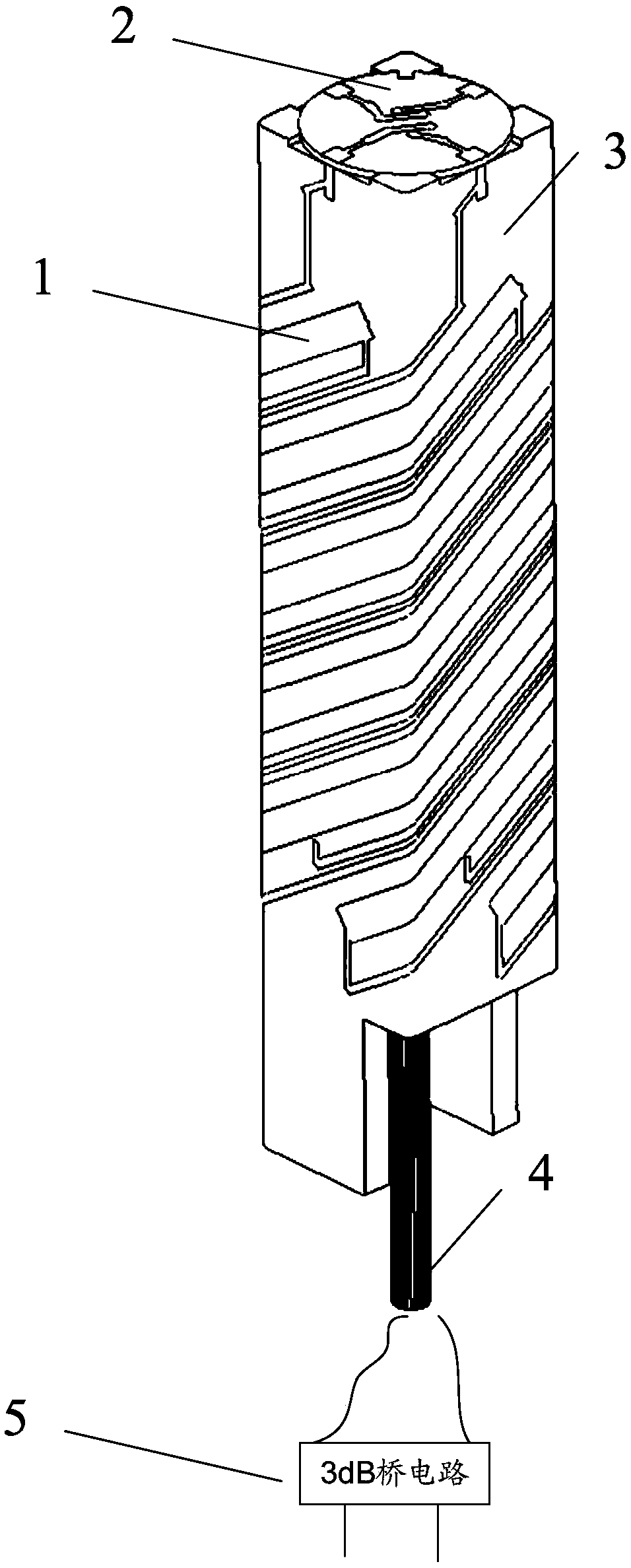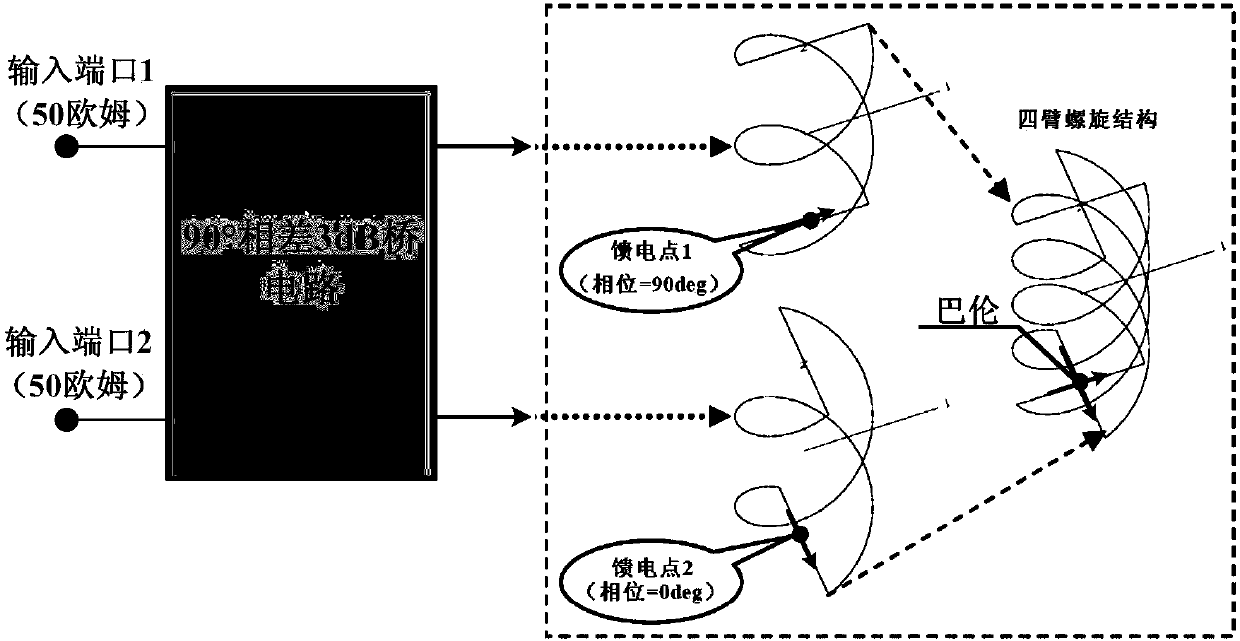Novel quadrifilar helical antenna
A four-arm helix and antenna technology, applied in the field of new four-arm helix antennas, can solve problems such as difficult to meet application requirements, and achieve the effects of avoiding design complexity, better performance and function, strong practicability and technical competitiveness
- Summary
- Abstract
- Description
- Claims
- Application Information
AI Technical Summary
Problems solved by technology
Method used
Image
Examples
Embodiment Construction
[0031] Such as figure 1 As shown, a new type of four-arm helical antenna includes a dual-frequency helical strip 1, a balun structure 2, a helical support medium 3, a cable 4, and an amplitude-phase output circuit 5. The input terminals of the amplitude-phase output circuit 5 are respectively connected to the signal excitation The port is connected to the signal load port, the output end is connected to one end of the cable 4, the cable 4 is set inside the spiral support medium 3, and passes through the spiral support medium along the centerline of the spiral support medium 3, and the balun structure 2 is set on the spiral support medium 3, the other end of the cable 4 is connected to the balun structure 2, the dual-frequency spiral strip 1 is set on the outer surface of the spiral support medium, the balun structure 2 is connected to the dual-frequency spiral strip through the feeding spiral contact, and the antenna signal passes through The signal excitation port is sent to ...
PUM
| Property | Measurement | Unit |
|---|---|---|
| Diameter | aaaaa | aaaaa |
Abstract
Description
Claims
Application Information
 Login to View More
Login to View More - R&D
- Intellectual Property
- Life Sciences
- Materials
- Tech Scout
- Unparalleled Data Quality
- Higher Quality Content
- 60% Fewer Hallucinations
Browse by: Latest US Patents, China's latest patents, Technical Efficacy Thesaurus, Application Domain, Technology Topic, Popular Technical Reports.
© 2025 PatSnap. All rights reserved.Legal|Privacy policy|Modern Slavery Act Transparency Statement|Sitemap|About US| Contact US: help@patsnap.com



